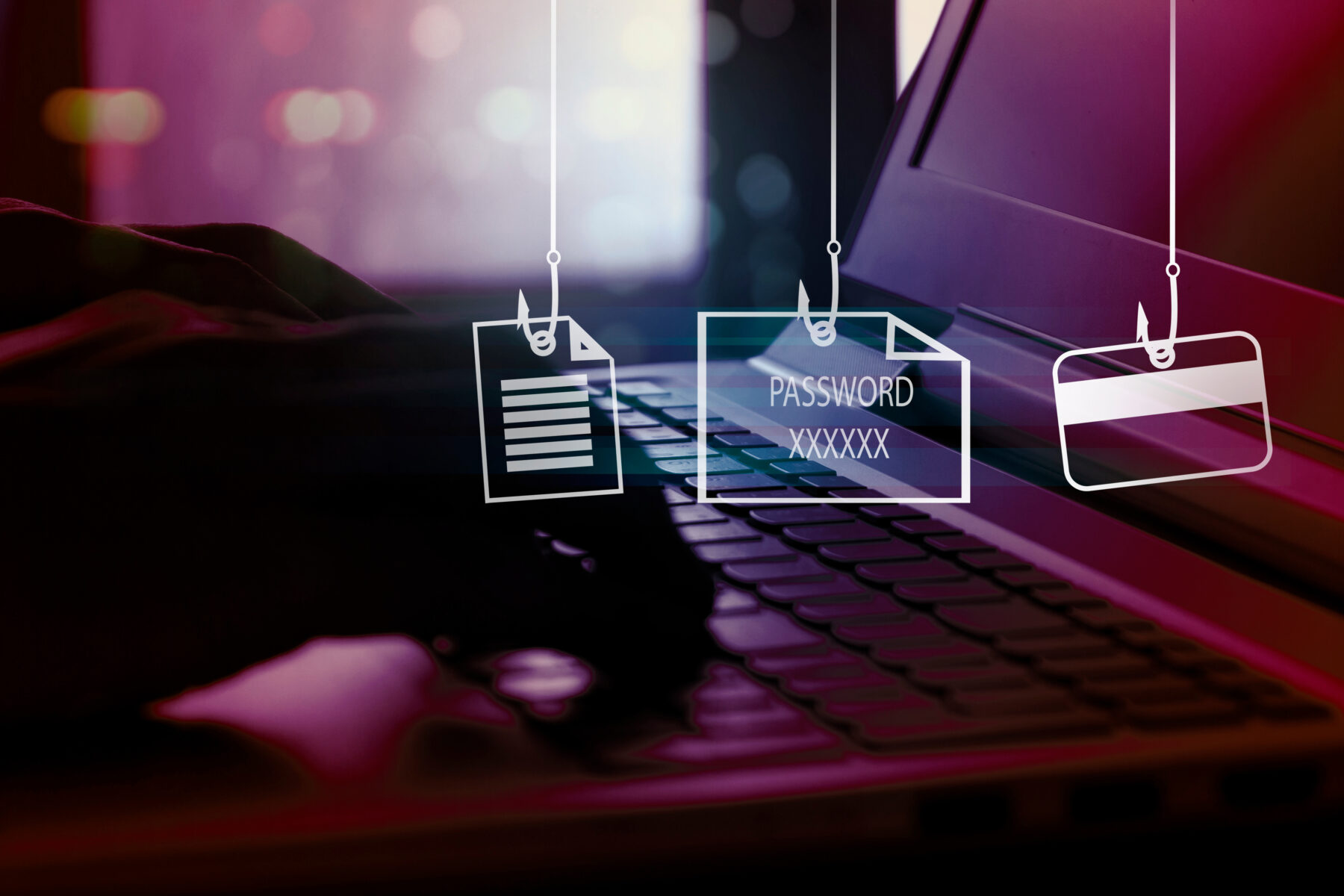Byline: Ted Hulsy, CRO, Snap Tech IT
Cybersecurity Strategies
In today’s digital world, cyber threats and data breaches are unfortunately becoming increasingly common. As a business decision maker, it is up to you to protect your company from any potential cyber-attack and ensure that corporate assets – both physical and electronic – remain secure.
In this blog, we will guide you through several aspects of creating an effective cybersecurity strategy for your business. Put simply, there’s no one-size-fits-all answer when it comes to keeping a business safe online – however understanding key cybersecurity strategies is half the battle. Let’s begin.

Understanding Cyber Attacks and Their Impact
Cyber-attacks come in various forms:
- Malware: Malicious software like viruses, worms, and ransomware used to infiltrate systems, steal data, or disrupt operations.
- Phishing: Fraudulent emails or websites that trick individuals into revealing sensitive information.
- Denial-of-Service (DoS) and Distributed Denial-of-Service (DDoS): Overloading a system or network to make it inaccessible to legitimate users.
- Man-in-the-Middle (MitM): Intercepting and altering communication between parties to eavesdrop or modify data.
- SQL Injection: Exploiting web application vulnerabilities to manipulate databases and gain unauthorized access.
- Social Engineering: Manipulating human psychology to deceive individuals into revealing confidential information or performing actions.
- Zero-day Exploits: Leveraging unknown vulnerabilities before patches are available.
- Advanced Persistent Threats (APTs): Long-term, targeted attacks aiming to remain undetected while compromising systems.
The volume and variety of attacks highlight the need for robust cybersecurity measures and awareness.
Cyber incidents can cause widespread disruption and financial impacts for businesses. A single attack can have a domino effect on a company’s reputation, financial standing, and customer trust. The potential consequences of a cyber-attack can be catastrophic, from financial loss to legal penalties and even bankruptcy. These attacks can cause significant damage to a business’s intellectual property, proprietary data, and personal information. The aftermath of a cyber-attack may require extensive reconstruction of a company’s digital infrastructure, which can be a lengthy, expensive process. Therefore, businesses must take preventive measures to protect themselves from cyber-attacks, including adopting multilayered security protocols, performing regular vulnerability assessments, and regularly training employees in cybersecurity best practices.
Building a Strong Cybersecurity Foundation
Building a strong cybersecurity foundation involves several key elements. First and foremost, employee education and training are crucial. By educating employees about common cyber threats, teaching them to recognize phishing attempts, and promoting safe online practices, organizations empower their workforce to be vigilant and proactive in identifying and mitigating potential risks.
Securing the network infrastructure is equally important. This includes implementing firewalls, intrusion detection systems, and network segmentation to limit unauthorized access. Regular security assessments and vulnerability scans help identify and address weaknesses before they can be exploited. Encrypting sensitive data in transit and at rest further enhances network security.
Regular software updates and patching play a significant role in maintaining a strong defense. Outdated software and unpatched systems are often targeted by attackers exploiting known vulnerabilities. Establishing a comprehensive patch management process ensures that updates and security patches are promptly applied across systems and applications. Automated patch management tools streamline this process and ensure critical vulnerabilities are addressed promptly.
Strong password policies and multi-factor authentication add an extra layer of protection. Organizations should enforce complex passwords, regular password changes, and educate employees on password hygiene. Multi-factor authentication provides an additional verification step, reducing the risk of unauthorized access even if passwords are compromised.

By integrating these elements, organizations can build a robust cybersecurity foundation. Employee education and training create a knowledgeable workforce, while a secure network infrastructure prevents unauthorized access. Regular software updates and patching mitigate vulnerabilities, and strong password policies with multi-factor authentication enhance user account security. Employing these practices helps organizations fortify their defenses against cyber threats and protect sensitive data and systems.
Essential Cybersecurity Strategies
Implementing essential cybersecurity strategies is crucial to safeguarding sensitive data and systems from evolving cyber threats. Several key strategies include robust firewall and intrusion detection systems, effective endpoint security solutions, regular data backups and recovery planning, secure email, and web filtering, as well as incident response and disaster recovery plans.
First, organizations should implement robust firewall and intrusion detection systems. Firewalls act as a barrier between internal networks and external threats, filtering incoming and outgoing network traffic. Intrusion detection systems monitor network activities for suspicious behavior and potential breaches, enabling swift responses to security incidents.
Utilizing effective endpoint security solutions is essential. Endpoint security protects individual devices, such as laptops and mobile devices, from malware, unauthorized access, and data breaches. These solutions often include antivirus software, host-based firewalls, and device encryption to ensure comprehensive protection.
Regular data backups and recovery planning are crucial for mitigating the impact of data loss or system compromise. Organizations should establish a systematic approach to regularly back up critical data and ensure backup copies are stored securely offsite. A comprehensive recovery plan outlines the steps and procedures to restore systems and data in the event of a cyber incident.
Employing secure email and web filtering is vital to prevent phishing attacks, malware distribution, and unauthorized access. Email filtering blocks malicious emails and attachments, reducing the risk of phishing and social engineering attacks. Web filtering restricts access to potentially harmful or inappropriate websites, further protecting users from malware and malicious content.

Establishing incident response and disaster recovery plans is essential to effectively manage cyber incidents and minimize their impact. Incident response plans outline the steps and responsibilities for identifying, containing, and recovering from security incidents. Disaster recovery plans focus on restoring systems and operations after a major disruption, such as a ransomware attack or natural disaster.
By implementing these essential cyber defense strategies, organizations can significantly enhance their resilience against cyber threats. Robust firewalls and intrusion detection systems, effective endpoint security solutions, regular data backups, secure email, and web filtering, as well as incident response and disaster recovery plans, form a comprehensive defense framework to protect against various cyber risks.
Cybersecurity Best Practices for Employees
Implementing cybersecurity best practices for employees is crucial. Employees play a vital role in maintaining a secure environment by adopting safe practices and being vigilant. Several key practices include recognizing and reporting phishing attempts, practicing safe internet browsing, implementing effective password management and secure authentication, as well as adhering to device and physical security measures.
Recognizing and reporting phishing attempts is vital. Employees should be trained to identify suspicious emails, messages, or websites that attempt to deceive them into revealing sensitive information. Promptly reporting such attempts allows for swift action to mitigate potential risks and prevent data breaches.
Safe internet browsing practices are important to prevent inadvertently visiting malicious websites or downloading malware. Employees should be educated on the importance of verifying website authenticity, avoiding suspicious links, and not downloading files from untrusted sources. Implementing web filtering tools can further enhance browsing security by blocking access to known malicious sites.
Proper password management and secure authentication practices are vital to protect user accounts and sensitive information. Employees should be encouraged to use strong, unique passwords and avoid reusing passwords across multiple accounts. Implementing multi-factor authentication adds an extra layer of security by requiring additional verification steps, such as a one-time password generated from a mobile app or SMS.
Device and physical security measures are essential for protecting sensitive data and preventing unauthorized access. Employees should be encouraged to lock their devices when not in use and be cautious when connecting to public Wi-Fi networks. Physical security measures, such as securing workstations and limiting access to sensitive areas, further strengthen overall defense.
By promoting these cybersecurity best practices, organizations can create a culture of security awareness among employees. Recognizing and reporting phishing attempts, practicing safe internet browsing, implementing strong password management, utilizing secure authentication, and adhering to device and physical security measures collectively contribute to a robust defense against cyber threats.
In this blog, we have covered the general topics of understanding cyber-attacks, building a solid foundation of cybersecurity, essential strategies, and best practices for employees. As technology evolves, so should cybersecurity standards and methods taken to protect your organization. Cyber criminals are a constant threat and devising tactics to out-maneuver cybersecurity measures. A layered, defense-in-depth strategy will help keep your company’s assets secure from malicious actors.